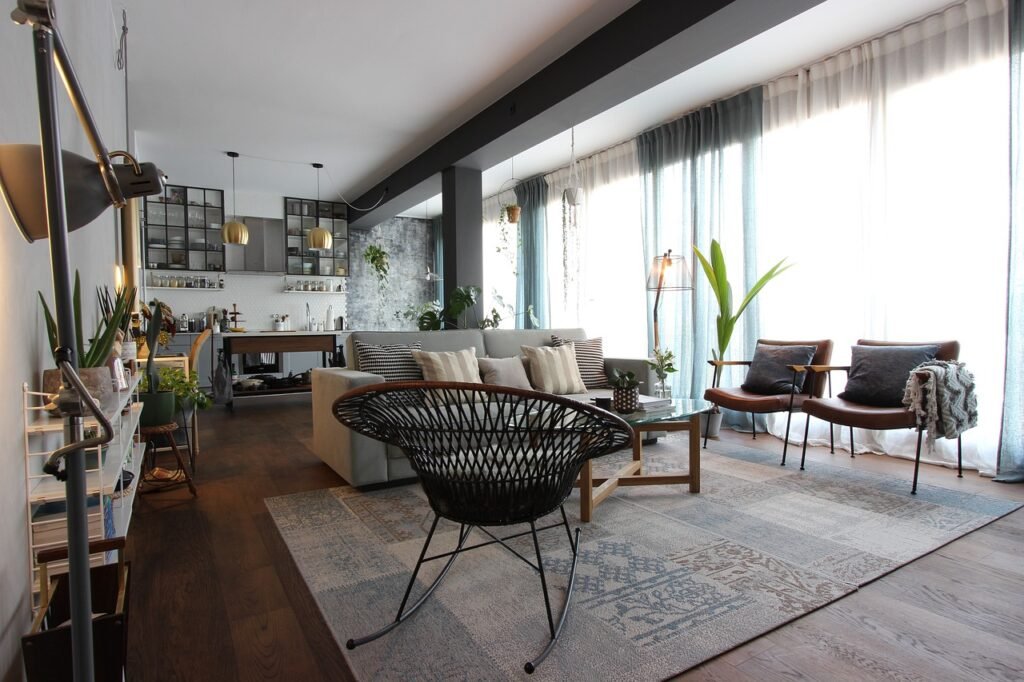Image by Ilona Pintar from Pixabay
Why “Clean Enough” Might Not Be Enough
Ever finish cleaning and feel accomplished, only to notice dust resettling on surfaces before you’ve even put the vacuum away? Welcome to the never-ending battle between humans and household grime.
Most people operate under the assumption that visible cleanliness equals actual cleanliness. Spoiler alert – it doesn’t. Your space might look presentable to guests, but microscopic threats lurk in places you’d never think to check. Allergens accumulate in carpets. Bacteria colonize cutting boards. Mold establishes beachheads in bathroom grout. All while your space passes the “looks fine to me” test.
The connection between home cleanliness and health isn’t subtle. Research shows that more than 50 million Americans struggle with allergies annually, making allergies the sixth leading cause of chronic illness nationwide. A significant portion of these reactions originate from indoor environmental factors – dust mites, pet dander, mold spores, and other delightful microscopic invaders that make themselves at home in yours.
Effective cleaning isn’t about achieving Instagram-worthy aesthetics. It’s about creating genuinely healthy environments where you can breathe easily, sleep soundly, and avoid the constant low-grade illness that comes from living in spaces harboring invisible health hazards.
The Room-by-Room Reality Check
Different spaces require different strategies. That universal cleaning spray you’ve been using everywhere? Probably not doing what you think it’s doing.
Kitchen: Where Food Meets Funk
Kitchens present unique challenges because they’re simultaneously high-traffic zones and food preparation areas. Cross-contamination isn’t just a restaurant concern – it’s happening on your counters right now.
Start with cutting boards. If you’re still using that same plastic cutting board from three years ago, congratulations – you’re basically spreading bacteria smoothie across your vegetables. Cutting boards develop grooves where bacteria hide from surface cleaning. Replace them regularly or sanitize wooden ones properly with hot water and vinegar solutions.
Sponges deserve special mention as possibly the grossest item in most homes. Studies suggest that kitchen sponges can harbor more bacteria than toilet seats – that fun fact probably just made you want to throw yours directly into a volcano. Replace sponges weekly or microwave damp ones for two minutes to kill bacteria (though replacement works better).
Kitchen cleaning priorities:
- Disinfect counters before and after food prep
- Clean refrigerator coils quarterly for efficiency and cleanliness
- Degrease range hoods and exhaust fans monthly
- Sanitize garbage disposal with ice cubes and citrus peels
- Wash dish towels in hot water every few days
Don’t forget about appliances. That microwave harboring last month’s spaghetti sauce explosion? It’s not just gross – it’s a bacterial playground. Regular deep cleaning prevents buildup that becomes exponentially harder to remove over time.
Bathroom: The Moisture Magnet
Bathrooms combine moisture, warmth, and organic matter – basically creating Club Med for mold and mildew. Standard surface wiping doesn’t address the real issues hiding in grout lines, behind toilets, and inside shower door tracks.
Ventilation makes enormous differences. Running exhaust fans during and after showers removes moisture before mold establishes itself. If your bathroom lacks proper ventilation, you’re fighting an uphill battle against persistent moisture problems.
Grout requires special attention. Those dark lines between tiles aren’t just discolored – they’re mold highways. Scrub with baking soda paste and old toothbrushes, then seal grout annually to prevent future penetration.
You might read more about specialized approaches for different surfaces and materials that require professional-level knowledge to clean without causing damage.
Tools That Actually Make a Difference
Cleaning effectiveness depends heavily on using appropriate tools. That ancient mop spreading dirty water around? Not helping. The vacuum with the clogged filter redistributing dust? Actively making things worse.
Invest in quality microfiber cloths. Unlike traditional rags, microfiber actually traps dirt and bacteria rather than pushing them around surfaces. Color-code them by room to prevent cross-contamination – blue for bathrooms, green for kitchens, yellow for general areas.
HEPA vacuum cleaners filter particles down to 0.3 microns, capturing allergens that standard vacuums blow back into the air. If anyone in your household has allergies or respiratory issues, this upgrade isn’t optional – it’s essential.
Steam cleaners deserve mention for their ability to sanitize without chemicals. High-temperature steam kills bacteria, dust mites, and mold while loosening grime from surfaces. They’re particularly effective on tile, sealed floors, and upholstery that can handle moisture.
Essential cleaning toolkit includes:
- Microfiber cloths in multiple colors
- HEPA-filter vacuum with attachments
- Steam cleaner for chemical-free sanitizing
- Scrub brushes in various sizes and stiffness
- Quality mop with washable, replaceable heads
Creating Habits That Stick
The secret to maintaining healthy living spaces isn’t occasional deep cleaning marathons – it’s establishing sustainable daily habits that prevent problems from developing.
As the saying goes, “cleaning and organizing is a practice not a project.” This wisdom recognizes that maintenance trumps remediation every time. Small daily actions prevent the overwhelming buildup that makes cleaning feel impossible.
Implement the “one-touch rule” – deal with items immediately rather than setting them down “temporarily.” Mail gets sorted over the recycling bin, not piled on counters. Dishes go directly into the dishwasher, not stacked in the sink. Clothes go into hampers, not draped over chairs.
Daily 15-minute tidying sessions prevent chaos from accumulating. Set a timer and focus on high-impact areas – clearing counters, wiping surfaces, spot-vacuuming high-traffic zones. These brief interventions maintain baseline cleanliness that makes weekly deep cleaning actually manageable.
Create weekly rotating schedules for deeper tasks:
- Monday: Bathrooms
- Tuesday: Kitchen deep clean
- Wednesday: Vacuum and mop floors
- Thursday: Dust and surfaces
- Friday: Laundry and linens
- Weekend: Rotating projects (windows, baseboards, etc.)
When DIY Meets Its Limits
Even the most dedicated home cleaners eventually encounter situations requiring professional intervention. Recognizing these limits isn’t admitting defeat – it’s acknowledging that some jobs require specialized equipment, training, and experience.
Carpet deep cleaning falls into this category. Rental machines lack the extraction power that professional equipment provides, often leaving carpets oversaturated and prone to mold growth. Professional services use truck-mounted systems with superior cleaning and drying capabilities.
Upholstery presents similar challenges. Furniture fabrics vary wildly in their cleaning requirements. Using wrong products can permanently damage expensive pieces. Professionals understand fabric codes and appropriate cleaning methods for each material type.
According to workplace research, 94% of workers report increased productivity in clean environments. This statistic applies equally to home settings – clean spaces reduce stress, improve focus, and create environments where people actually want to spend time.
Air duct cleaning represents another task better left to professionals. DIY attempts often push contaminants deeper into systems rather than removing them. Professional services use specialized equipment that thoroughly cleans ductwork while preventing contamination spread.
The reality: Effective home cleaning balances daily maintenance with periodic deep cleaning and occasional professional intervention. Understanding which tasks fall into which category helps you allocate time and resources efficiently while maintaining genuinely healthy living spaces.
Perfect cleanliness remains impossible – life happens, and sterile environments aren’t the goal anyway. But consistent effort using proper techniques, appropriate tools, and realistic expectations creates spaces supporting health and wellbeing without consuming your entire existence. That’s the real win.

Jared H. Furness loves sports! He writes about football, basketball, and baseball. He looks at player stats and tells fun, easy stories. His articles are very simple to read. Everyone can understand them! You can find his writing on big sports websites. He talks about how players play, exciting game moments, and smart plans. For example, he writes about games like Boston College Eagles vs. UVA and Arizona Diamondbacks vs. Miami Marlins. Jared writes his own stories, and they follow Google’s rules. They’re easy to find on Google and never copied. Fans and experts love his stories about stars like Bobby Witt Jr. and fun EuroLeague basketball moments. Jared makes sports writing super fun and clear!
